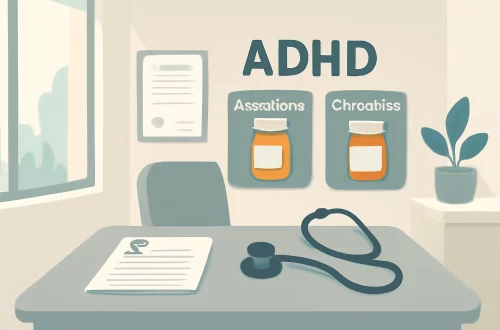
Understanding Iris Staging in Feline Health Management
Feline health management is a multifaceted field that requires a comprehensive understanding of various factors influencing a cat’s well-being. Among these factors, iris staging has emerged as a critical component in assessing and managing feline health. Iris staging is a method used to evaluate the optical health of cats, particularly in relation to conditions affecting the eye, which can indicate broader health issues.
Cats are known for their independent behaviors and often mask signs of illness, making it essential for pet owners and veterinarians to adopt a proactive approach. The iris, the colored part of the eye, can reveal a lot about a cat’s overall health, including potential systemic diseases. Understanding iris staging can help cat owners identify changes in their pets’ health status early on, allowing for timely intervention.
Often, the eye serves as a window to the body, providing insights into various health conditions. With the right knowledge and tools, pet owners can better support their feline companions, ensuring they lead long, healthy lives. This article delves into the significance of iris staging in feline health management, highlighting its benefits, underlying principles, and practical applications for both pet owners and veterinarians.
The Importance of Eye Health in Cats
Maintaining optimal eye health in cats is crucial for their overall well-being. The eyes are not only essential for vision but also serve as indicators of underlying health issues. Changes in the appearance of a cat’s iris can signal various conditions, ranging from simple allergies to more serious diseases like hypertension or diabetes.
Regular eye examinations can help detect problems early, which can lead to more effective treatment options. For instance, cats suffering from high blood pressure may show changes in their iris color or texture. Identifying these changes through iris staging allows veterinarians to recommend appropriate diagnostic tests and treatments.
Moreover, certain breeds are predisposed to specific ocular issues. For example, Persian cats are known for their susceptibility to hereditary eye disorders. Understanding the hereditary risks associated with specific breeds can empower cat owners to monitor their pets more closely, ensuring timely veterinary care when needed.
In addition to hereditary factors, environmental influences can also affect a cat’s eye health. Factors such as exposure to allergens, irritants, and even lifestyle choices play a role. For instance, indoor cats may face different risks than outdoor cats—like exposure to dust and pollen—affecting their eye health. By recognizing these environmental factors, cat owners can create a safer, healthier living environment for their pets.
Regular veterinary check-ups should include a thorough examination of the eyes, focusing on the iris and other structures. This proactive approach can help mitigate risks and ensure that any changes are addressed promptly. Ultimately, fostering awareness about eye health can contribute significantly to a cat’s quality of life.
Understanding Iris Staging Techniques
Iris staging involves a systematic approach to assess the condition of the iris and its implications for feline health. The process typically begins with a visual examination of the cat’s eyes, allowing veterinarians to identify any abnormalities in color, texture, or shape. Various grading systems can be employed to categorize the findings, providing a clear framework for evaluation.
One common method involves assessing the iris’s pigmentation, clarity, and overall appearance. For example, a healthy iris may exhibit a vibrant color and clear boundaries, while an unhealthy iris might appear dull, discolored, or irregular. Each of these characteristics can provide valuable insights into the cat’s health status.
In addition to visual examination, advanced diagnostic tools such as slit-lamp biomicroscopy may be used for a more detailed assessment. This technology allows veterinarians to examine the eye’s structures with enhanced magnification, enabling them to detect subtle changes that might otherwise go unnoticed.
Furthermore, iris staging can help identify systemic issues that may be affecting the cat’s overall health. For instance, if a veterinarian notices a change in iris color, it may prompt further investigation into conditions like liver disease or hyperthyroidism.
The information gathered through iris staging can guide treatment decisions, from lifestyle modifications to medical interventions. By accurately assessing and documenting iris health, veterinarians can create tailored health management plans that address individual needs.
Ultimately, understanding iris staging techniques empowers both pet owners and veterinarians to work collaboratively in maintaining and improving feline health. Knowledge of these techniques can lead to better outcomes and enhance the quality of life for cats.
Common Health Issues Identified Through Iris Staging
Iris staging can reveal a range of health issues in cats, helping veterinarians and owners identify problems that may require intervention. Some of the most common conditions that can be detected through iris examination include hypertension, diabetes, and various ocular disorders.
Hypertension, or high blood pressure, is a significant health concern for cats, particularly as they age. Changes in the iris, such as discoloration or increased pigmentation, can indicate elevated blood pressure levels. Early detection is crucial, as untreated hypertension can lead to severe complications, including vision loss and organ damage.
Diabetes mellitus is another condition that can manifest through changes in the iris. Cats with diabetes may exhibit alterations in eye color or texture, which can prompt further testing for blood sugar levels and insulin function. Early diagnosis and management of diabetes can significantly improve a cat’s quality of life.
Ocular disorders, such as cataracts or glaucoma, can also be identified through iris staging. Cataracts may appear as a cloudiness in the eye, while glaucoma can cause changes in the iris’s shape and color. Timely intervention in these cases can prevent further deterioration of the cat’s vision and overall health.
In addition to these common conditions, iris staging can also aid in the detection of infections or inflammatory diseases affecting the eye. For instance, uveitis, an inflammation of the uveal tract, can lead to visible changes in the iris and may require prompt medical attention.
By understanding the health issues that can be identified through iris staging, cat owners can become more vigilant in monitoring their pets. This proactive approach can lead to earlier diagnosis and more effective treatment strategies, ultimately enhancing the overall health and well-being of feline companions.
Best Practices for Feline Eye Care
Maintaining optimal eye health in cats involves several best practices that pet owners can adopt to support their feline companions. Regular veterinary check-ups and eye examinations are paramount. These visits allow for professional assessments and the opportunity to address any concerns that may arise.
In addition to professional care, pet owners should also be proactive in observing their cats for any signs of eye issues. This includes monitoring for changes in eye color, excessive tearing, discharge, or signs of discomfort. If any unusual symptoms are noticed, it is essential to consult a veterinarian promptly.
Providing a healthy diet is another critical aspect of feline eye care. Nutritional deficiencies can impact overall health, including eye health. A well-balanced diet rich in vitamins and antioxidants can help support the immune system and reduce the risk of ocular diseases. Foods high in omega-3 fatty acids, for example, are known to promote eye health.
Environmental factors should also be considered. Reducing exposure to potential irritants, such as smoke, dust, or strong chemicals, can help maintain eye health. Additionally, creating a safe and enriching environment can prevent accidents that might lead to eye injuries.
Lastly, educating oneself about the specific needs of their cat’s breed can provide valuable insights into potential eye health risks. Some breeds are more prone to certain ocular conditions, making it important for owners to stay informed and vigilant.
By implementing these best practices, cat owners can significantly contribute to the maintenance of their pets’ eye health, fostering a longer, healthier life for their feline friends.
**Disclaimer:** This article is for informational purposes only and does not constitute medical advice. Always consult a veterinarian for health concerns regarding your pet.




